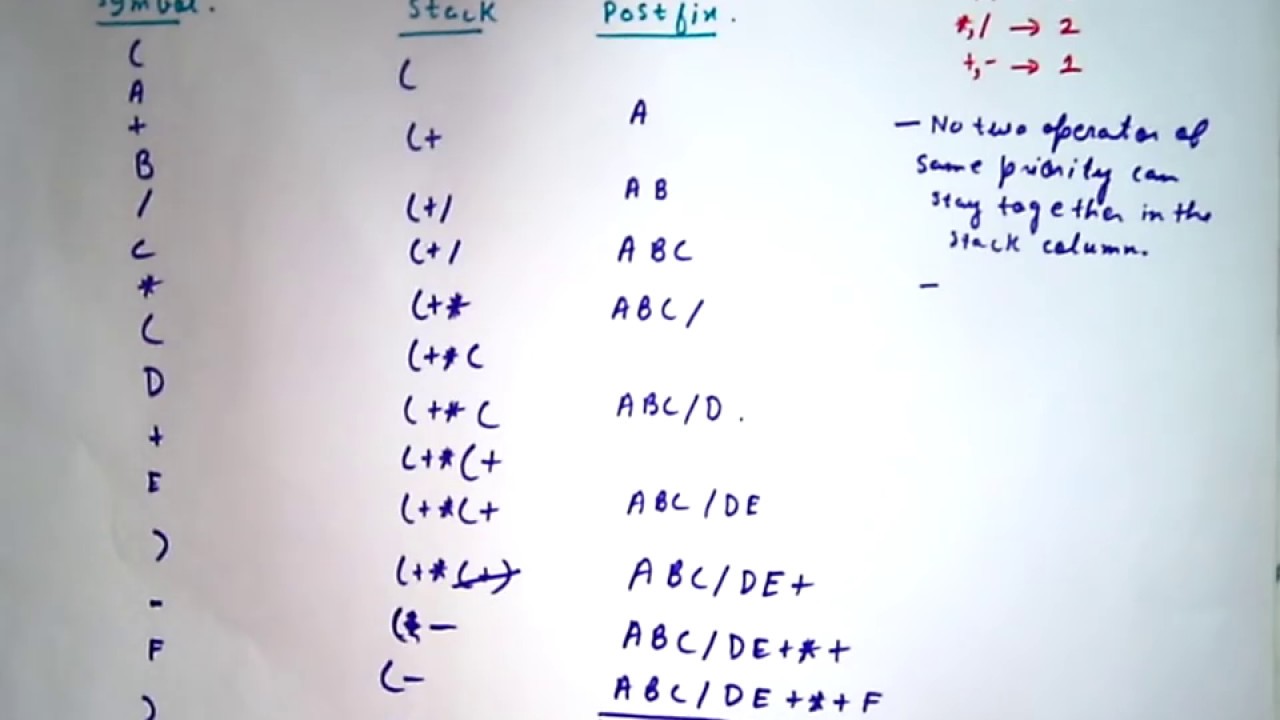How to Convert to Postfix
If you’re looking to convert an expression from infix notation to postfix notation, you’ve come to the right place! Postfix notation, also known as Reverse Polish Notation (RPN), is a mathematical notation in which every operator follows all of its operands. This format eliminates the need for parentheses and helps in simplifying the evaluation of expressions.
Converting from infix to postfix may seem daunting at first, but with some practice and understanding of the process, you’ll be able to tackle it with ease. In this article, we’ll delve into the steps involved in converting an infix expression to postfix notation.
Understanding Infix and Postfix Notations
Before we dive into the conversion process, let’s take a moment to understand the difference between infix and postfix notations. Infix notation is the standard mathematical notation in which operators are placed between operands, such as 3 + 4 * 2. In postfix notation, the operators come after their operands, like 3 4 2 * +.
Postfix notation simplifies expression evaluation by eliminating the need for parentheses and following a sequential order of operands and operators. This makes it easier to evaluate complex expressions and reduces the chances of errors in calculations.
Steps to Convert Infix to Postfix
Converting an infix expression to postfix involves following specific rules and algorithms. Here are the steps to convert infix to postfix:
- Start with an empty stack and an empty output queue.
- Scan the infix expression from left to right.
- For each element in the infix expression:
- If the element is an operand, add it to the output queue.
- If the element is an operator:
- While the stack is not empty and the precedence of the current operator is less than or equal to the precedence of the operator at the top of the stack, pop the operator from the stack and add it to the output queue.
- Push the current operator onto the stack.
- If the element is an opening parenthesis, push it onto the stack.
- If the element is a closing parenthesis:
- Pop operators from the stack and add them to the output queue until an opening parenthesis is encountered.
- Pop the opening parenthesis from the stack.
- Continue scanning the infix expression until all elements have been processed.
- Pop any remaining operators from the stack and add them to the output queue.
By following these steps and rules, you’ll be able to successfully convert an infix expression to postfix notation. This conversion process simplifies the evaluation of expressions and helps in avoiding errors in calculations.
Conclusion
Converting an infix expression to postfix notation is a valuable skill that can streamline the evaluation of mathematical expressions. By following the steps outlined in this article and practicing the conversion process, you’ll become more adept at converting infix expressions to postfix notation.
Remember, practice makes perfect, so don’t be discouraged if you find the process challenging initially. With patience and persistence, you’ll soon master the art of converting infix expressions to postfix notation!
